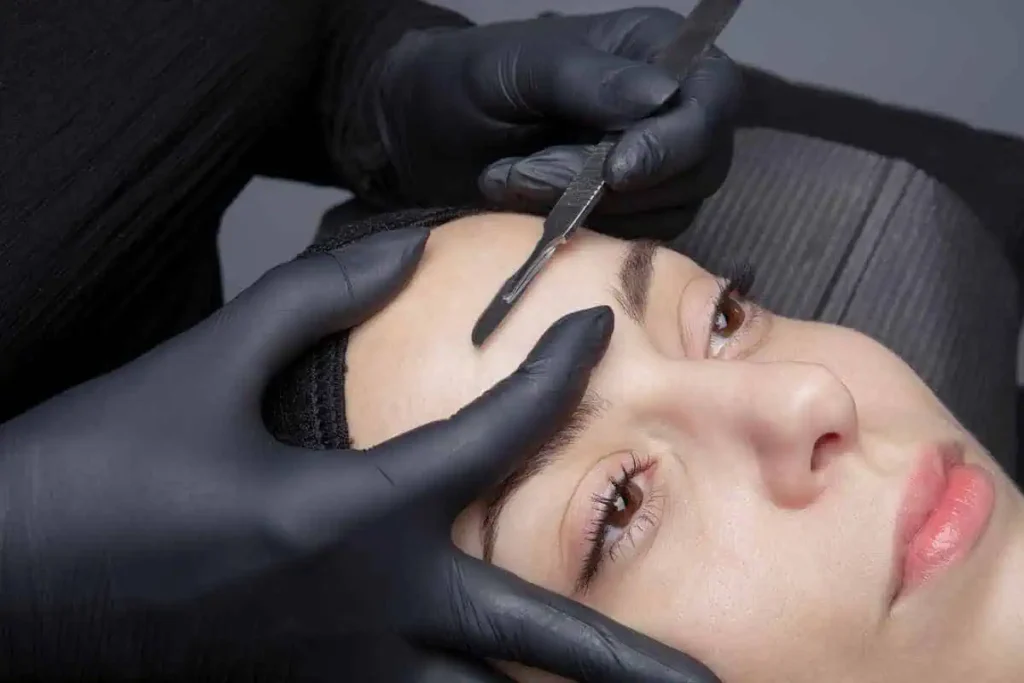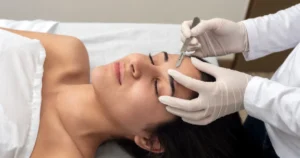
Dermaplaning is a popular skin treatment designed to give your face a smooth, radiant appearance. By gently exfoliating the top layer of dead skin cells and fine facial hair, it aims to reveal fresher, more youthful skin beneath. Suitable for most skin types, dermaplaning can help improve the texture and tone of your skin, making it look healthier and more vibrant. However, it’s not recommended for everyone, particularly those with certain skin conditions.
With its immediate results and minimal downtime, many people are turning to this treatment for a quick and effective skincare boost. Knowing how dermaplaning works and what to expect can help you decide if it’s the right choice for your skincare needs.
What Is Dermaplaning?
Dermaplaning is a non-invasive skincare procedure focusing on exfoliating the skin to achieve a smoother, brighter complexion. Employing a sterile surgical scalpel, the procedure entails carefully scraping out fine vellus hair, sometimes known as “peach fuzz,” and dead skin cells from the face. Those seeking a quick and painless method to renew their skin without resorting to chemicals or more intrusive treatments frequently choose this treatment.
Dermaplaning not only exfoliates the skin but also promotes deeper product penetration, which enhances the effects of skincare products. This makes the skin look and feel more refreshed and can also reduce the appearance of acne scars, fine lines, and wrinkles. Many people appreciate the immediate results and the fact that there is no downtime, making it an accessible prospect for those with busy schedules.
Dermaplaning is appropriate for all skin types, but it’s best to speak with a dermatologist to find out if it’s right for your particular skin type.
How Dermaplaning Works
During dermaplaning, the topmost layer of cellular debris and fine vellus hair is carefully scraped away using a specialized tool called a dermatome or surgical scalpel. The process begins with thoroughly cleansing the skin to remove any makeup, oils, or impurities. Once the skin is clean and dry, a trained professional holds the skin taut and uses the blade to make short, swift strokes at a 45-degree angle across the skin’s surface.
The topmost layer of skin, which is made up of fine hair and dead cellular debris, is successfully removed by the blade to unviel a complexion that is smoother and more vibrant underneath.Besides improving the skin’s appearance, exfoliation helps skincare products absorb better into the skin, enabling the active components to function more efficiently and thoroughly.
The treatment typically lasts between 30 to 45 minutes, and no anesthesia is required, although some practitioners may employ a numbing cream to improve comfort. Patients might feel slightly scratching or tingling, but the procedure is generally not painful.
After the procedure, a soothing serum or moisturizer is often applied to calm the skin and reduce any potential redness or irritation. The immediate results are noticeable, with the skin appearing more radiant and feeling softer. It’s a simple yet effective method to achieve a fresh and rejuvenated look without the need for chemicals or more invasive treatments.
Benefits of Dermaplaning
These benefits make dermaplaning a popular choice for individuals looking to enhance their skin’s appearance quickly and effectively.
- Exfoliation: Get rid of dead cellular debris to reveal skin that is brighter and smoother.
- Improved Product Absorption: Enhances the effectiveness of skincare products by allowing deeper penetration.
- Radiant Skin: Instantly boosts skin’s radiance and smoothness.
- Makeup Application: Provides a smoother base for makeup, resulting in a flawless finish.
- Reduces the Formation of Wrinkles and Fine Lines: By reducing fine lines, this technique helps people look younger.
- Minimizes Acne Scars: Helps in reducing the visibility of shallow acne scars.
- Non-Invasive: Requires no downtime, making it convenient for those with busy schedules.
- Suitable for Most Skin Types: Generally safe for a wide range of skin types and tones.
- Immediate Results: Provides an instant improvement in skin texture and tone.
Aftercare and Recovery
After dermaplaning, proper aftercare is crucial to ensure optimal results and minimize potential side effects. Here’s what you can expect and how to care for your skin post-treatment:
- Immediate Aftercare:
- Hydration: Following dermaplaning, your skin could feel tight or dry. Use a moisturizing serum or lotion to calm and shield the recently exposed skin.
- Avoid Touching: Try not to touch your face immediately after the procedure to reduce the risk of infection and irritation.
- Sun Protection:
- Sunscreen: You should use a broad-spectrum sunblock with at least SPF 30 because your skin gets more susceptible to the sun’s rays. If you’re outdoors, reapply once every two hours.
- Avoid Sun Exposure: Avoid direct sunlight as much as possible, especially in the first 24-48 hours. Wearing a wide-brimmed hat can provide additional protection.
- Skincare Routine:
- Gentle Products: Use gentle, non-irritating skincare products. Avoid exfoliants, retinoids, and other harsh chemicals for at least a week to prevent irritation.
- Cleanse Carefully: Use a mild cleanser to wash your face. Pat your skin dry with a clean towel rather than rubbing it.
- Moisturize and Nourish:
- Hydrating Serums: Products with hyaluronic acid can help keep your skin hydrated.
- Antioxidants: Applying serums with antioxidants, like vitamin C, can aid in healing and protect your skin from environmental damage.
- Avoid Makeup:
- No Makeup: Avoid applying makeup for at least 24 hours after treatment to allow your skin to breathe and recover fully.
- Clean Tools: When you do resume using makeup, ensure that brushes and sponges are clean to avoid introducing bacteria to your fresh skin.
- Monitor Your Skin:
- Redness and Swelling: Mild redness and swelling are common and should subside within a few hours to a day. If these symptoms persist or worsen, contact your dermatologist.
- Breakouts: It’s normal to experience minor breakouts or whiteheads. Maintain a consistent, gentle skincare routine to manage this.
- Follow-Up:
- Professional Guidance: Schedule a follow-up appointment with your skin care professional to assess your skin’s response to the treatment and plan any future sessions.
Takeaway
For those interested in experiencing the benefits of dermaplaning firsthand, Radiance Medical Spa offers professional dermaplaning services tailored to your skincare needs. Our experienced professionals ensure a safe and effective treatment, helping you achieve radiant, rejuvenated skin. Contact us for your assessment today and take the first step toward a healthier, glowing skin with Radiance Medical Spa.



